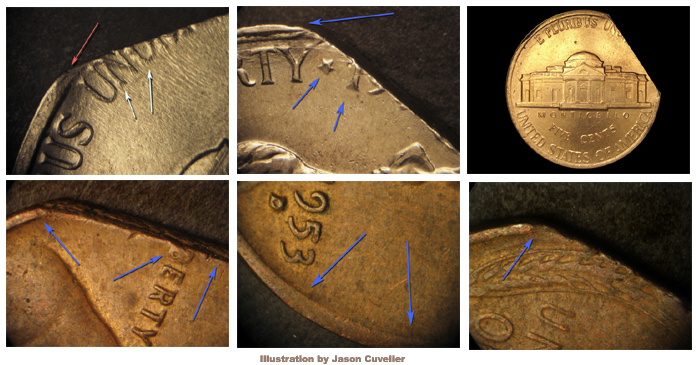Maybe some one could help me to understand better "Clipped or Incomplete"
From the examples above here at LCR and hundreds of others I have looked at lately a question arises.
How can a clipped planchet have also a normal looking rim except for the area it is clipped?
When a Planchet was punched from sheet then rimmed, A planchet as I know it is forced to roll or squeezed through the rimmer machine, and then minted.
It would seem to me to have happened after minting else the minting process would have left a portion of metal squeezed into the missing planchet area.
Second question: How can one legitimize a clip? seems very risky to me.
My brother has in his shop a industrial hole punch that will punch up to 1 inch hole in a 1/2 plate steel. I could clip any coin with the proper diameter and who would know better?
Recently a guy offered to sell me a box of clipped coins, no thanks my friend. Scared of them.
Any feedback to help me have more desire for a risky mint ERROR.
Thanks
James
From the examples above here at LCR and hundreds of others I have looked at lately a question arises.
How can a clipped planchet have also a normal looking rim except for the area it is clipped?
When a Planchet was punched from sheet then rimmed, A planchet as I know it is forced to roll or squeezed through the rimmer machine, and then minted.
It would seem to me to have happened after minting else the minting process would have left a portion of metal squeezed into the missing planchet area.
Second question: How can one legitimize a clip? seems very risky to me.
My brother has in his shop a industrial hole punch that will punch up to 1 inch hole in a 1/2 plate steel. I could clip any coin with the proper diameter and who would know better?
Recently a guy offered to sell me a box of clipped coins, no thanks my friend. Scared of them.
Any feedback to help me have more desire for a risky mint ERROR.
Thanks
James




 Rollem
Rollem



Comment